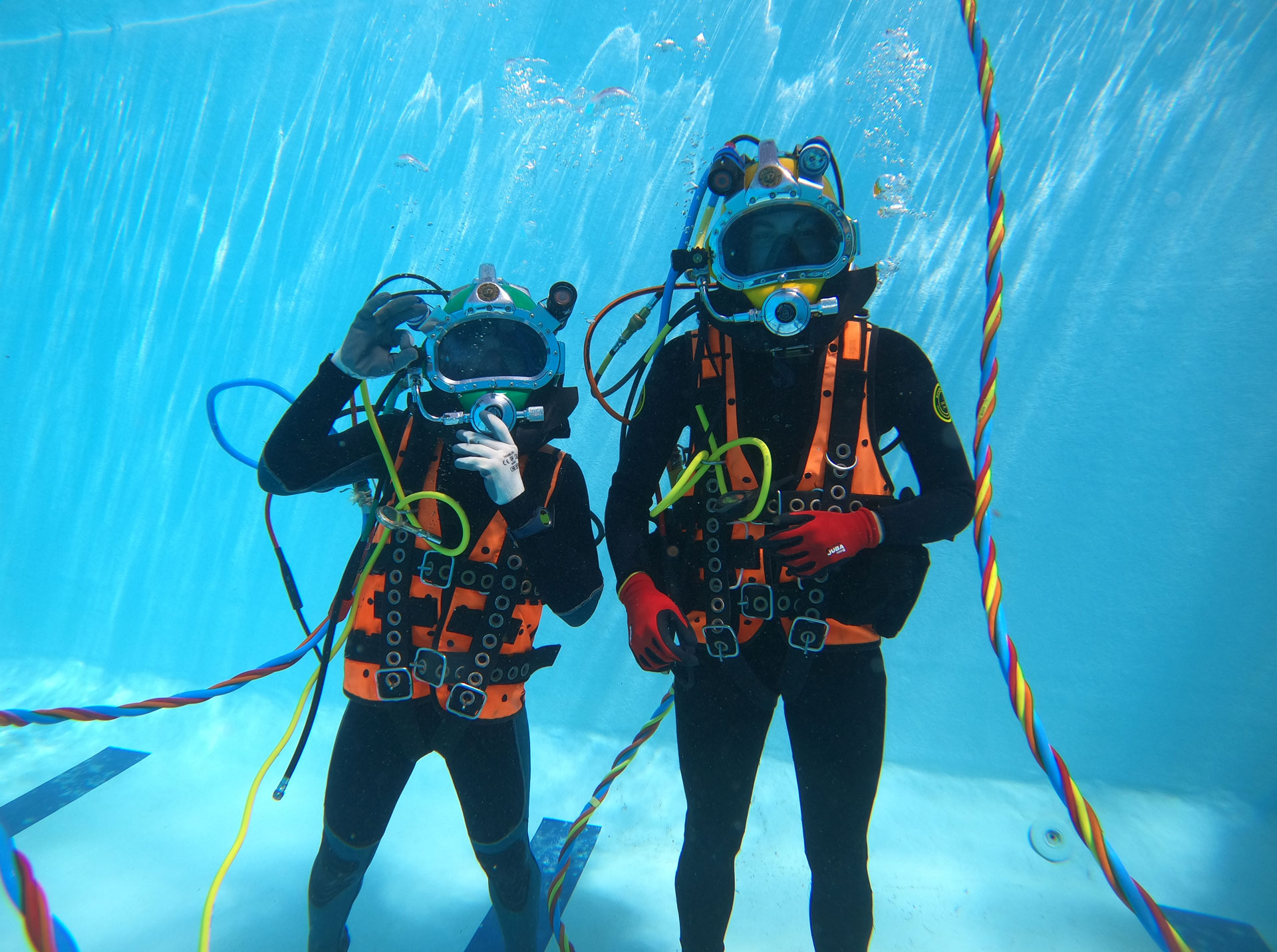Life as a commercial diver involves being part-builder, and part-paramedic. But far from being exotic and romantic, it’s a physically demanding job that requires meticulous attention to detail
The word diver conjures up images of a magical underwater world with a solitary figure in a white diving suit, lead boots and a heavy bronze diving helmet connected to the surface with a bubbling cable… But modern commercial diving is a far cry from the romanticized images of Captain Nemo and his Nautilus portrayed by the great Jules Verne in ‘Twenty Thousand Leagues Under the Sea’.
Entry into this field begins with a rigorous training programme to achieve a vocational qualification as a Technician in Underwater and Hyperbaric Operations. This course is offered at Arrecife’s Escuela de Pesca in Lanzarote and various locations across Spain, including Santa Cruz in Tenerife, Cádiz, Almería, Málaga, Girona, Tarragona, Pontevedra, Murcia, Alicante, Valencia and Guipuzkoa.
Demand for the course is high, as are the entry requirements. Students must be at least 17 years old, possess a psycho-technical aptitude certificate, and psychological evaluation from a qualified practitioner. Additionally, they need to hold a certificate proving they have passed a decompression test, have tolerance to hyperbaric oxygen and have passed the hyperbaric chamber test. They also have to undergo physical examinations and provide their own material, including a wetsuit.
Jake Barber, a Lanzarote-based diver who completed his training in Arrecife, highlights the demanding nature of the profession. “Generally, in Spain, commercial diving is pretty poorly paid given the risks involved,” he explains. “Working at depths exceeding 100 meters, pays well, but the health risks and wear and tear on the body are extremely high.”
All ports have a team of divers,” Barber continues, “but they are outsourced through private companies. Once in the water, the biggest concerns come not from possible encounters with sharks and jellyfish but rather from equipment failure, a momentary lapse in concentration and human error. That’s what I’m more afraid of,” states Barber.
Technological advancements over the years have significantly transformed commercial diving gear. “You wear a full wetsuit, safety harness, a spare oxygen bottle, gloves, and always have a knife,” Barber details, “and then there’s the air supply tube, communication system, camera and spotlight cables, plus the umbilical and of course the diving mask. There’s also a team regulating your oxygen supply and maintaining constant communication.”
Omar Delgado, a seasoned diver with two decades of experience, has worked on ships, harbours, shipwrecks, drains, repairs, inspections, and fish farm infrastructures, often charged with capturing underwater footage through photography and videos. He has also worked with the hyperbaric chamber at the Hospital Insular and has been teaching since 2020.
Delgado emphasizes the onus on time. “Every second counts, and after two hours of welding at a depth of eighty metres conditions start to become much more difficult and dangerous, even with the best safety measures in place. Following the correct decompression procedure is essential, which means a slow ascent with pauses at various depths.”
“It’s difficult at first,” Delgado continues, “as the body has to adapt to the conditions, like the discomfort of the cold, which triples underwater. And even though you’re always working with a partner and in constant contact with the surface, you’re essentially alone. It’s like being a goalkeeper facing a penalty kick – your head starts to spin and it’s scary, especially at the beginning. You start singing, talking to yourself… the waiting is nerve-wracking.”
“Student divers are just as scared, if not more so,” he observes, “because they are minors. Many sign up thinking it’s one long adventure, but there’s a lot of hard work involved: instruments, physics, maths, English…”






